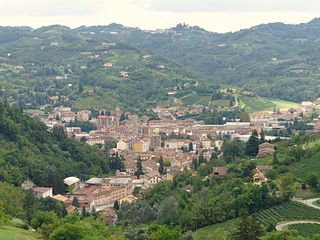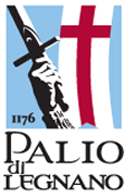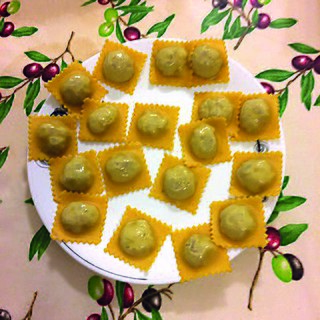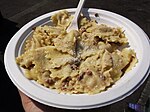
Piedmont is a region of Northwest Italy, one of the 20 regions of Italy. It borders the Liguria region to the south, the Lombardy and Emilia-Romagna regions to the east, and the Aosta Valley region to the northwest; it also borders Switzerland to the north and France to the west. It has an area of 25,402 km2 (9,808 sq mi) making it the second largest region of Italy after Sicily; as of 31 January 2021, the population was 4,269,714. The capital of Piedmont is Turin, which was also the capital of the Kingdom of Italy from 1861 to 1865.

Asti is a comune (municipality) of 74,348 inhabitants (1–1–2021) located in the Italian region of Piedmont, about 55 kilometres east of Turin, in the plain of the Tanaro River. It is the capital of the province of Asti and it is deemed to be the modern capital of Montferrat.

Molise is a region of Southern Italy. Until 1963, it formed part of the region of Abruzzi e Molise together with Abruzzo. The split, which did not become effective until 1970, makes Molise the newest region in Italy. Covering 4,438 square kilometres (1,714 sq mi), it is the second smallest region in the country, after the Aosta Valley, and has a population of 313,348.

Montferrat is a historical region of Piedmont in Northern Italy. It comprises roughly the modern provinces of Alessandria and Asti. Montferrat is one of the most important wine districts of Italy. It also has a strong literary tradition, including the 18th century Asti-born poet and dramatist Vittorio Alfieri and the Alessandrian Umberto Eco.

Palio is the name given in Italy to an annual athletic contest, very often of a historical character, pitting the neighbourhoods of a town or the hamlets of a comune against each other. Typically, they are fought in costume and commemorate some event or tradition of the Middle Ages and thus often involve horse racing, archery, jousting, crossbow shooting, and similar medieval sports. Once purely a matter of local rivalries, many have now become events that are staged with an eye to visitors and foreign tourists.

Valtellina or the Valtelline ; Lombard: Valtelina or Valtulina; German: Veltlin; Italian: Valtellina) is a valley in the Lombardy region of northern Italy, bordering Switzerland. Today it is known for its ski center, hot spring spas, bresaola, cheeses and wines. In past centuries it was a key Alpine pass between northern Italy and Germany. The control of the Valtellina was much sought after, particularly during the Thirty Years' War as it was an important part of the Spanish Road.

The Langhe is a hilly area to the south and east of the river Tanaro in the provinces of Cuneo and Asti in Piedmont, northern Italy.

In Italy, a sagra is a local festival, very often involving food, and frequently a historical pageant and sporting events: when the sporting event is a historical recreation as well, such as a joust or a horse race in costume or armour, it is called a palio.

Asti is a sparkling white Italian wine that is produced throughout southeastern Piedmont, but is particularly focused around the towns of Asti and Alba. Since 1993 the wine has been classified as a denominazione di origine controllata e garantita (DOCG) and as of 2004 was Italy's largest producing appellation. On an average vintage more than ten times as much Asti is produced in Piedmont than the more well-known Piedmontese red wine Barolo.

Canelli is a comune (municipality) of 10,459 inhabitants in the Province of Asti in the Italian region of Piedmont.

Calosso is a rural comune (municipality) in the Province of Asti in the Italian region Piedmont, located about 60 kilometres (37 mi) southeast of Turin and about 20 kilometres (12 mi) south of Asti in the hilly area between the Tanaro and Belbo and on the borders between Monferrato and Langa. As of 31 December 2004, it had a population of 1,298 and an area of 15.7 square kilometres (6.1 sq mi).
Cinaglio is a comune (municipality) in the Province of Asti in the Italian region Piedmont, located about 35 kilometres (22 mi) southeast of Turin and about 11 kilometres (7 mi) northwest of Asti. As of 31 December 2004, it had a population of 470 and an area of 5.4 square kilometres (2.1 sq mi).

Nizza Monferrato is a comune (municipality) in the Province of Asti in the Italian region of Piedmont, located about 60 kilometres (37 mi) southeast of Turin and about 20 kilometres (12 mi) southeast of Asti.

San Marzano Oliveto is a comune (municipality) in the Province of Asti in the Italian region Piedmont, located about 60 kilometres (37 mi) southeast of Turin and about 20 kilometres (12 mi) southeast of Asti.

Roero is a geographical area in the north-east corner of the province of Cuneo in Piedmont, north-west Italy. This hilly region is known for its wines and for its fruit production: particularly the peaches of Canale and the local variety of pear known as Madernassa which originated in the late eighteenth century in Vezza d'Alba. Strawberries are also grown.

The Oltrepò Pavese is a historical region making up the southern portion of the province of Pavia, in the northwest Italian region of Lombardy. The area is named after its location south of the River Po as considered from the provincial capital Pavia and in general from the rest of Lombardy.

The Palio di Asti is a traditional Italian festival of medieval origin that culminates with a bareback horse race.

Traditions of Italy are sets of traditions, beliefs, values, and customs that belongs within the culture of Italian people. These traditions have influenced life in Italy for centuries, and are still practiced in modern times. Italian traditions are directly connected to Italy's ancestors, which says even more about Italian history.

The Palio di Legnano is a traditional event generally held on the last Sunday of May in the City of Legnano, Italy, to recall the Battle of Legnano held on 29 May 1176 by the Lombard League and the Holy Roman Empire of Frederick Barbarossa. This Palio is composed by a medieval pageant and a horse race. Until 2005 the whole event was named Sagra del Carroccio.

Pavese agnolotti is a type of egg-based stuffed pasta of the Lombard cuisine served hot or warm, typical of the Oltrepò Pavese, an area of the province of Pavia, in the Italian region of Lombardy. Pavese agnolotti can be served dry, with a sauce based on Pavese stew, or in goose broth.




























